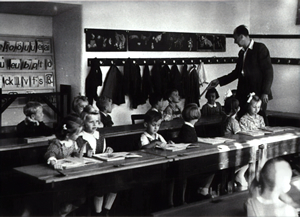 Class cohesion describes the social and emotional ‘glue’ that binds students and teachers together in a learning environment. If class cohesion is weak, both staff and students feel emotionally unsafe, unengaged and often conflicted with their goals.
Class cohesion describes the social and emotional ‘glue’ that binds students and teachers together in a learning environment. If class cohesion is weak, both staff and students feel emotionally unsafe, unengaged and often conflicted with their goals.
In contrast, a class with high levels of cohesion engenders a powerful sense of belonging and shared goals among all members. As such, a highly cohesive class exemplifies a happy and productive learning environment where everyone is on the same ‘educational page’.
So what are the ingredients of class cohesion? And, moreover, is it possible to create class cohesion and build a unified, positive and productive classroom experience?
In social psychological terms, class cohesion equates to ‘personal attraction’ between members. ‘Personal attraction’ is a term used to represent a liking for others based on shared traits and goals (rather than anything to do with romantic relationships). So, in this context, if two children are attracted to each other because they have a shared goal, there is said to be cohesion between them. If all members of a class are attracted to all other members of a class, then the class operates as a cohesive whole. In reality, this is something that rarely happens without careful support and guidance.
Without intervention, most classes contain several different groups. Conditions of group membership will vary widely and may well be out of tune with the goals of the teacher and school. In fact, many class difficulties occur due to conflicts between different groups or because of unhealthy conditions for group membership. For example, members of a group bound by ‘high academic achievement’ may feel under a lot of pressure to achieve but also consider non-group members to be ‘stupid’ or to be inferior. In contrast, members of a group bound by ‘appearance’ may worry excessively about how they look and consider ‘outsiders’ to be unattractive and inadequate. It is not difficult to see how potentially dangerous and explosive a class can be when it is made up of a number of conflicting groups with dubious conditions for membership.
To help create a cohesive classroom, teachers need to build class unity and highlight conditions of group membership that involve all the children. These conditions need to highlight desired, healthy goals. As a starting point, teachers can usefully ask kids to come up with their own class identity and goals for membership. These need to be based on desired traits and behaviours that are in line with the school’s values and ideals. This exercise very much equates to discussing the ‘class rules’ with all students in the class. The shared goals of class group membership could include ‘mutual respect’ and ‘support’, a ‘non-judgmental attitude’ and a ‘caring and supportive approach’ to building relationships.
In-class activities which focus on the conditions of class membership through collaboration and co-operation can also help to build cohesion. There are many ‘whole class’ games and activities available that can be played to help increase attraction between members and create a positive sense of belonging. Rather than focusing on the acceptance of difference, classes could valuably spend more time highlighting desired universal similarities such as kindness and respect.
With the new school year just starting, teachers are already under pressure to make headway with a dauntingly large curriculum. Despite this pressure, it is worth considering spending the entire first week of the year ‘gluing the class together’. Time spent at the beginning of the year on building cohesion may well save a lot of time and wasted energy throughout the rest of the year.
A happy class is a cohesive class is a productive class.
Dr Helen Street is an education consultant, author, presenter and chair of The Positive Schools Initiative. Details about the Positive Schools 2016 conference series are available online at www.positiveschools.com.au


